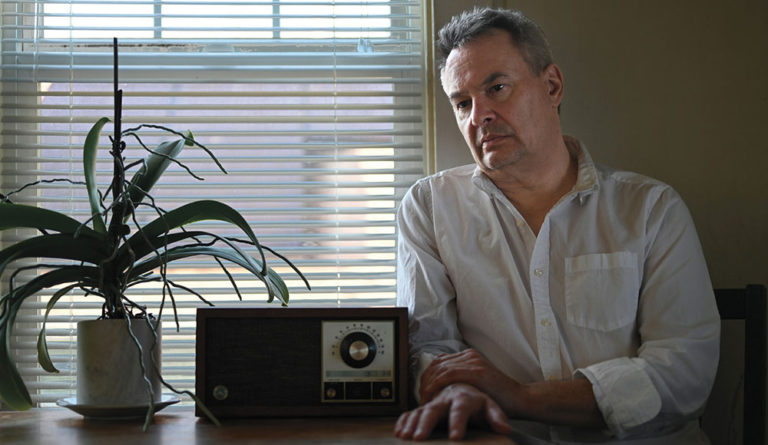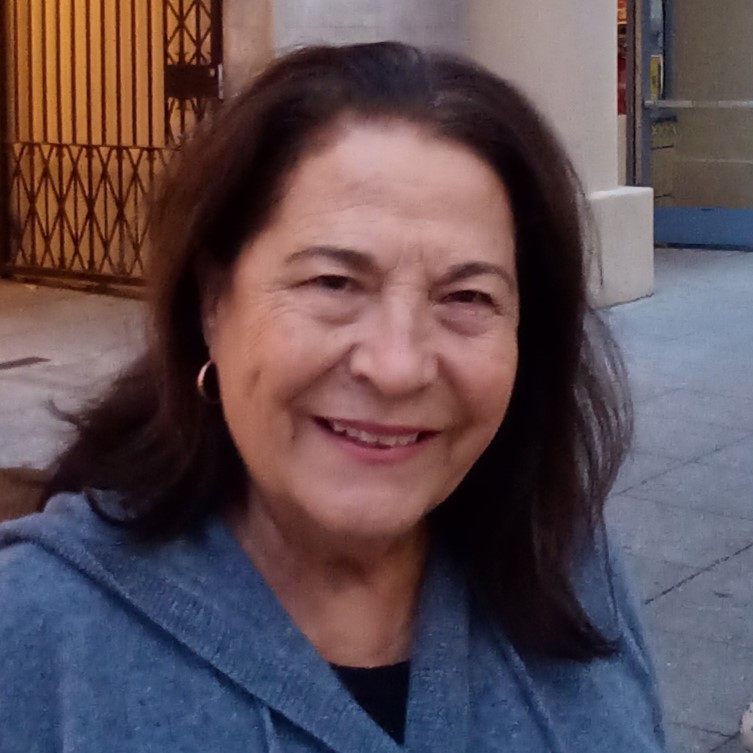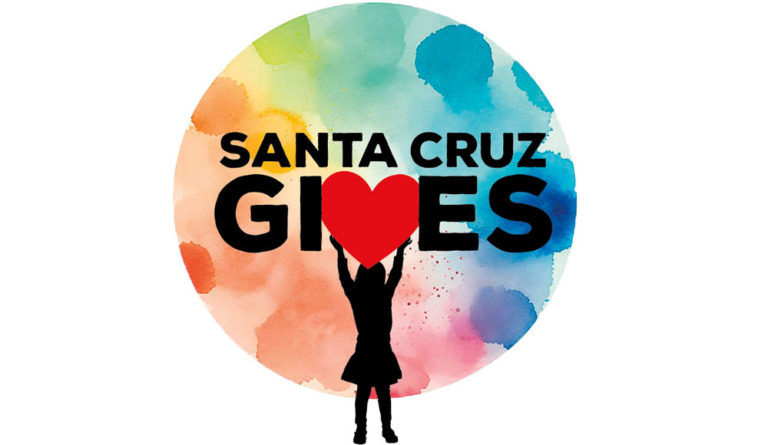Local nonprofits work incredibly hard to improve the quality of life in Santa Cruz County, from cleaning our beaches and monitoring our drinking water quality to mentoring our children and providing informative local news. Now it’s our turn: Visit SantaCruzGives.org to learn about and donate to one or more of this year’s 63 participating organizations whose programs benefit our community.
November 20-December 31 | Donate @ SantaCruzGives.org
Santa Cruz Gives is funded by the generosity of Good Times, Volunteer Center of Santa Cruz County, Community Foundation Santa Cruz County, Applewood Foundation, Joe Collins, Driscoll’s, Inc., Monterey Peninsula Foundation, 1440 Foundation, Santa Cruz County Bank, Wynn Capital Management, The Pajaronian, and Press Banner.
AMAH MUTSUN LAND TRUST
Amah Mutsun Land Trust’s Vision for 2025: We are the only tribe in Santa Cruz County that provides Indigenous leadership in conservation through research and education, conservation and restoration, and Indigenous stewardship. We engage approximately 200 members of the Amah Mutsun Tribal Band and 500 residents of Santa Cruz County annually. We collaborate on projects at the UCSC Arboretum, the MAH, Cotoni-Coast Dairies National Monument, Wilder Ranch State Park, Soquel Demonstration Forest, and more. This year the Land Trust completed its second strategic plan in consultation with majority tribal members. Join us as we build land acquisition capabilities, defend sacred sites from development and destruction, and create our first-ever climate change program
ARTS COUNCIL SANTA CRUZ COUNTY
Arts Education for Everyone: Imagine arts in every school, every day, across our county. We’re at a pivotal moment in arts education with exciting Proposition 28 funding available to expand programming. Schools are eager to enhance their programs, but there’s a shortage of teaching artists and credentialed arts teachers. As the top provider of arts education in local schools, we must grow our team, launch new training and expand our Summer Arts Education Institute to meet the need. Our community understands: Art is essential. Together, we ignite imaginations, enhance learning, empower educators and create vibrant learning environments.
ASSOCIATION OF FAITH COMMUNITIES
Add Shelter Beds in South County: Watsonville has seen a 60% rise in homelessness and has no low-barrier shelter beds for single adults. We hope to start a 20-bed shelter using the space and resources of local faith communities. AFC has operated an effective shelter model in both cost and outcomes in North County for 12 years. Last year, 46% of shelter members moved to permanent housing. We’re working to bring this model in partnership with local faith communities and organizations. Funds raised will go toward startup costs, which include sleeping mats, shelter supplies and a vehicle to transport shelter members from site to site.
BIG BROTHERS BIG SISTERS OF SANTA CRUZ COUNTY
It Takes Little to Be Big: In Santa Cruz County, many children face mental health challenges without adequate support systems. We recognize the transformative power of mentorship in their lives. Through meaningful relationships, we provide the support to navigate life’s hurdles, addressing social isolation and instilling confidence and resilience in youth. Caring adult mentors empower them to overcome obstacles and build a brighter future. Our small staff of three coordinate hundreds of volunteers. Currently we’re recruiting more volunteer mentors to match with youth. Your donation helps cover the cost of enrolling and training mentors, ensuring each child is paired with a safe, prepared adult.
BIRCHBARK FOUNDATION
Saving Pets, Supporting Families: Our core initiative is to reduce financial barriers that prevent loving families from accessing life-saving care for their pets that have a good prognosis. In partnership with local veterinarians who reduce costs for our clients, BirchBark channels the compassion and generosity of our community to provide stability to families faced with fixable but unaffordable, urgent veterinary care. We estimate that 25%, or 30,000 pets, are owned by seniors, low-income families or marginalized populations in Santa Cruz County.
BOYS AND GIRLS CLUBS OF SANTA CRUZ COUNTY
Upgrading Our Clubhouse for the Next Generation!: As more families move to Downtown Santa Cruz, we must ensure our Clubhouse is safe and modern. We aim to improve the essentials: a new roof, gutters and renovation of the indoor swimming pool, where thousands of local kids have learned to swim. This facility (built in 1969) suffers from decades of deferred maintenance. With your support, local families will have access to affordable, high-quality programs where kids can learn, grow and thrive. With the rising cost of living, requests for financial assistance have increased significantly. Our donor-funded scholarship program helps us provide youth with the resources and support they need to succeed in school and life.
CAMP OPPORTUNITY
Send At-Risk Kids to Camp!: An all-volunteer nonprofit, we hope to raise money to send 20 kids to camp. Our campers come from various backgrounds and living situations; all have been involved in the child welfare system, and many are at risk of abuse and neglect. Campers develop skills to make safe life choices and cultivate positive relationships that can be transferred to their community, school and home. No family is charged for their child’s participation. The estimated cost for one child to attend camp for a week is $1,500. This includes campground rental, room and board, as well as activities and supplies such as swimming, archery, tie-dye and more.
CASA OF SANTA CRUZ COUNTY
Advocating for Children in the Foster Care and Juvenile Probation Systems: Court Appointed Special Advocates (CASA) are volunteers who work one-on-one with children and youth in the foster care and/or juvenile probation systems. Each devotes a few hours a week getting to know one child and gathering information from everyone involved in the child’s life, and are part of a team that works for the child’s best interests. CASA recruits, screens, trains, matches and supervises volunteer advocates, who get to know their child’s situation and needs, help caregivers access resources to meet those needs, and advocate for the child in court, community and school settings.
CENTER FOR FARMWORKER FAMILIES
Empowering Farmworkers—Bridge the Digital Divide: This computer literacy program will provide farmworkers with essential digital skills and computers so they can access online resources and support their children’s education. Participants will learn to navigate digital platforms and connect with community resources. Your support will help cover the costs of computers, training, and ongoing assistance to create lasting positive change for farmworkers and their families.
COMMUNITY BIKE COLLECTIVE
Build a Cycling Habit: Currently there are no pathways for underserved youth in Santa Cruz County to get regularly involved in cycling and progress their skills in a supportive setting. Our idea is to offer youth a progression of coordinated cycling skills with opportunities to earn badges, cycling gear and even a bike as they complete designated “CBC Pathway” levels. The goal is to move youth from basic bike handling skills to engaging them in a lifelong activity that boosts physical and mental health, reinforces valuable life skills and builds community.
COMMUNITY BRIDGES
Wrap Them in Care—WIC Program Diaper Initiative: Our local Women, Infants, and Children (WIC) program, run by Community Bridges, has served thousands of families in Santa Cruz County and the Pajaro Valley since 1977. Rising diaper costs are a major challenge, with prices up 22% since 2018. To help, we launched the WIC Diaper Program in 2023 and have distributed 852 packs in nine months. However, demand exceeds supply. Your donation can help us expand this vital program, ensuring no family has to choose between diapers and other essentials.
COASTAL WATERSHED COUNCIL
A Thriving San Lorenzo River for All: The San Lorenzo River is vital as the primary source of drinking water, wildlife habitat and open space. However, this river faces challenges. To improve its health, CWC and 300 volunteers pick up trash, pull invasive weeds and plant native vegetation. Every year 800+ youth in our education program learn about their river and participate in solutions. The Riverwalk is the only large space to access nature in the heart of the city, a thoroughfare from the beach to downtown, and a safe recreation area. Our vision is a river that’s attractive and welcoming for recreation and reflection, and helps sustain diverse plants, animals and people.
DIENTES COMMUNITY DENTAL CARE
Elevating Care for a Healthier Community: Dientes’ largest clinic in mid-county serves over 100 people a day, 6 days a week. We want to serve more patients and offer a comfortable, modern, facility consistent with providing high quality care. Your support will help improve workflows, enhance patient interaction, and support more patients. More than 50,000 SC County residents with public insurance (Medi-Cal) are not able to see the dentist. For those without insurance, like seniors on Medicare, access to care is even more challenging. Dientes serves those with public insurance and provides free care and subsidized, affordable sliding-scale fees to your neighbors who need it most.
DIVERSITY CENTER OF SANTA CRUZ COUNTY
Never the Last Love Letter—A Documentary: Our project is a documentary produced with talented local volunteer filmmakers that explores untold stories of those who saved lives in Santa Cruz during the AIDS crisis. Through personal interviews, archival footage and historical artifacts, the film captures the creativity, courage and defiance of the LGBTQ+ community and illustrates how grassroots activism can transform public health and advance human dignity. The documentary will be released in summer 2025 with the Threads of Love art exhibit at the Santa Cruz Museum of Art and History, which will display the AIDS Memorial Quilt. Please join us in presenting local stories of resilience, hope and rebellion.
EAT FOR THE EARTH
Salud en tu Plato: Latinos face disproportionate barriers to health and higher rates of diet-related disease. This project is accessible, effective and relevant for Latinos suffering from chronic disease. Through a proven immersion in a whole-food, plant-based diet, participants feel better quickly and experience measurable improvements in biomarkers for health such as cholesterol, blood pressure and fasting glucose. Eating the healthiest human diet is so countercultural that people who want to improve their diet need evidence-based education, support, tools and community. We provide these for anyone, prioritize the underserved, and serve via word-of-mouth and our outreach events, including nutrition presentations, food prep classes, potlucks, film screenings and conferences.
ECOLOGY ACTION
Empowering Climate Action for Santa Cruz County: This campaign provides a climate action platform for community groups and residents. It offers leadership training to prepare locals for climate change impacts and to encourage household climate actions that foster more resilient and connected communities. This project provides locally specific resources and incentives for 120 climate learning topics and actions so homeowners and renters can easily reduce emissions, save money and prepare for climate change impacts. Nearly 40% of US GHG emissions come from five household sources: electricity, home heating, transportation, food choices and our waste stream. This online resource also supports school clubs, neighborhood groups, faith communities and co-worker teams to make small changes that together add up to big collective impact.
FAMILIES IN TRANSITION
Housing Services Fund: FIT’s project serves vulnerable families with children and young adults aged 18-24 who are heads of households and whose income is at or below 30% of Area Median Income for Santa Cruz County. We are fundraising to provide rental assistance, case management, housing navigation and staffing, or to supplement those selected for our Guaranteed Income Project (the latter addresses systemic inequities, supports lasting success and closes California’s racial wealth gap). Your contribution will directly impact youth and families in need, providing access to stable housing and the comprehensive support required for self-sufficiency, well-being and the overall health of our community.
FARM DISCOVERY AT LIVE EARTH
Growing Healthy Communities Through Food and Education: We are dedicated to addressing nutrition insecurity by growing and distributing organic produce to vulnerable residents. In addition, we provide education, including field trips and farm camps, where youth learn about sustainable agriculture, nutrition and environmental stewardship. Combining food distribution with hands-on learning empowers youth to transform their relationship with food, agriculture and their community. In 2025 we will grow, harvest and deliver 5,000 pounds of produce through the Farm Discovery fields, and 50,000 in partnership with Live Earth Farm, which allows us to glean excess produce. We’ll also add family farm partners to expand our reach (we currently partner with nonprofit pantries).
FREE GUITARS FOR KIDS
Santa Cruz Arts Council Guitar Giveaway: We will pilot a program to address arts funding cuts in schools. By distributing 240 guitars to four schools, in partnership with Santa Cruz Arts Council and Mariposa Arts, we aim to empower 240 students in grades 5-8—a critical age range for cognitive and creative development—with access to music education. Research shows that playing a musical instrument enhances cognitive, creative and mental focus, and also provides children with a better chance to lead productive, successful lives. Our long-term goal is to serve the entire county.
GIRLS INC.
7th & 8th Grade Programs: Our programs are offered to girls—ages 9-14—to inspire them to set health and wellness goals that include developing healthy relationships, practicing assertive communication skills, avoiding unhealthy behaviors, managing stress, handling conflict, understanding reproductive health, and identifying and standing up for their values. We request your support for 150 girls to participate in 10-12 interactive sessions, plus a college field trip.
GREY BEARS
Healthy Food for Seniors—Full Plates and Full Hearts: Santa Cruz County’s senior population is rapidly growing and many face barriers to accessing fresh food and social connections. This Grey Bears’ project ensures seniors receive fresh, locally sourced food through weekly deliveries, a free on-site market and hot meals. These efforts are powered by senior volunteers who deliver to more than 1,200 homebound recipients, and foster social connections to fill both plates and hearts. With you, hundreds of amazing volunteers, generous donors and community partners, our community is stronger and engaged at every age.
HABITAT FOR HUMANITY
13 Affordable Homes in Watsonville: Habitat for Humanity is building 13 homes for low-income, first-time homebuyer families. Santa Cruz County is one of the least affordable places for housing. This means that many people leave the area, weakening the economy and community. Our affordable homeownership helps to transform communities into places where people can thrive and build families for years to come. To qualify, first-time homebuyer households must earn 50%-80% of area median income, have a need for improved housing, and provide 500 hours to help build their homes alongside our professional construction crew and generous volunteers. Families then obtain an affordable mortgage, and receive homeowner education to improve all facets of their lives and build stability and self-reliance.
HOMELESS GARDEN PROJECT
Feed 2 Birds: Our trainees are individuals experiencing homelessness who work on their farm, earn wages, build job skills in hands-on roles on our farm and retail enterprise, and overcome barriers to stability. This program donates organic healthy produce that’s grown locally to other peer organizations to provide for their clients. Thanks to donors from Santa Cruz Gives and partnerships with 15 local nonprofits, in 2024 we increased the number of shares again. We grew our program to provide free, organic produce to individuals battling food insecurity from 30 weekly boxes to 45 in 2022. In 2023 the program grew to 60 shares. Please help us grow again and visit our online retail shop featuring 40+ products year-round (and at the Downtown Pacific Avenue and Capitola Esplanade stores).
HOPES CLOSET
The Basics: While we are blessed by donations of gently worn clothing, we are short on the basics of socks, shoes and new undergarments. Every child deserves to have these basic necessities as new items when possible. We use donated funds to thriftily shop for these items, but requests have grown exponentially in the last year. We provide up to 300 bundles a month and still cannot meet the demand. Hopes Closet serves the most vulnerable children in our community of Santa Cruz County.
HOSPICE OF SANTA CRUZ COUNTY
Your Choice, Your Journey: At the heart of hospice care is a focus on improving the quality of life, not just extending it. Founded 46 years ago by visionary nurses, Hospice of Santa Cruz County offers holistic care that nurtures the medical, emotional and spiritual well-being of patients and their families. As the County’s only nonprofit hospice provider, we prioritize people over profits, ensuring patients receive high-quality care that honors their goals, values and choices. Navigating serious illness can be overwhelming, especially for those facing language challenges, fear of the medical system or cultural barriers. We are committed to accessible care, education and grief support in English and Spanish.
JACOB’S HEART
Forever Loved Grief Retreat: The loss of a child to cancer is an unimaginable reality that families face. Our Grief Retreat creates an environment for bereaved families to explore, feel and release grief, supported by a community that understands without words. In 2025, 70 family members will grieve together with our bilingual/bicultural staff onsite to build safety, security and belonging as they move toward hope and healing. We envision a community where every child with cancer or in remission from cancer has a strong, informed family empowered to participate in their care. We strive to inspire compassionate action to create a safety net of support for each child and family.
KSQD 90.7FM
Amplify Community Voices—Broadcast/Podcast Workshops: KSQD will offer workshops for community members and radio hosts to learn and improve broadcast skills such as interviewing, editing, announcing and podcasting. By skills training, KSQD will increase access to the airwaves by diverse community members such as youth, seniors, farm workers and musicians, just to name a few. We will hold workshops in libraries and other easily-accessed places. Through our frequencies at 90.7, 89.7 and 89.5FM, we serve a potential audience of 645,000+, and estimate an audience of at least 2,000 at any given time. We stream programming at KSQD.org and archive stories on our website so more people can hear them.
LIFE LAB
Wildlands to Watering Cans Summer Scholarships: Life Lab offers children joyful, nature-based experiences to grow their love of nourishing food and nature, and we have trained thousands of college students to become outdoor educators who inspire the younger children. This Summer Camp has been in high demand in Santa Cruz County for 20 years, and with your support, children from low-income families can attend. The setting on a university campus allows them to develop a sense of belonging, to build community, and to exercise their bodies and minds. Your donation to our scholarship program will give up to 70 children the opportunity to attend the Wildlands to Watering Cans Summer Camp in 2025.
LIVE LIKE COCO
1,000 Graphic Novels: We launched a bookmobile this year with your help from last year, rolling it out for free book giveaways at summer school sites, community events and farmers markets. Each year we give out about 8,000 free new books to students at 18 local public schools. The #1 Request: Graphic novels, especially Dog Man. But buying these books is expensive, even with the discounts given to a nonprofit serving largely Title 1 schools. This fund would allow us to provide a collection that kids really love!
MENTORS DRIVING CHANGE FOR BOYS, MEN AND DADS
Generation Resilience: Our project empowers youth, especially those from underserved or vulnerable communities, to take the lead in creating innovative, community-based solutions to the challenges they face. The focus is on areas such as mental health, substance abuse prevention, environmental sustainability, social justice and economic empowerment, with an emphasis on social and emotional development. Research indicates that boys are more likely than girls to experience academic failure, substance use, binge drinking, violent crime, behavioral disorders and prescription of stimulant medications. Boys are twice as likely as girls to drop out of school and four times as likely to be expelled. Your support will increase our measurable impact on individuals and families.
MONARCH SERVICES—SERVICIOS MONARCA
Children and Youth Support—Empowerment & Education: We provide support groups at high school and middle schools across Santa Cruz County for survivors and allies of youth experiencing domestic violence, family violence, sexual violence and human trafficking. Monarch offers these at limited school sites based on funding and staffing restrictions, and all schools request a safe environment during school hours for students to receive peer counseling and resources. Our groups serve as an empowerment and leadership opportunity for youth to learn about safe relationships, healthy boundaries, informed consent and more. Our team of three is at capacity. Your funds will train volunteers and interns, and hire a staff person to offer these services.
MOTION PACIFIC
Free Dance for Parkinson’s Classes: We offer free weekly classes that serve critical needs for exercise, mental health, community and meaningful exchange for those diagnosed with Parkinson’s disease and their caregivers who are underserved and financially strained community members. With support from Santa Cruz Gives, we hope to grow our reach and partner with assisted living homes, in-home care providers, physical therapists and local neurologists specializing in movement disorders to ensure anyone diagnosed with PD can participate in these life-changing classes, clinically proven to support the health of people with PD. Please join us.
PAJARO VALLEY ARTS
Build a thriving arts hub for Watsonville!: PVA is transforming a 40-year-old arts organization into a vibrant new landmark destination in downtown Watsonville by building community through inspiring exhibitions, uplifting underserved youth, celebrating culture and changing lives. We’ve outgrown our tiny 1,200-square-foot home! Your funds will help remodel the historic 12,000-square-foot Porter Building on Main Street (we were able to purchase it!) to expand our programs, scale our free exhibitions and live performances, provide a professional space for artists to create and sell their work, and improve access to the arts for all.
PAJARO VALLEY LOAVES & FISHES
Groceries for Folks Without Access to a Kitchen: Our BIG IDEA is to create grocery bags for families and individuals experiencing homelessness in South County. These will include high-protein foods, water, and non-perishable, easy-to-open items. Santa Cruz County’s 2024 Point-in-Time (PIT) study highlights a significant shift of homelessness to Watsonville, particularly among older and disabled adults. The reasons individuals face food insecurity are complex, and asking for resources can carry shame. We serve our guests with dignity and compassion. This year we served 11,376 individuals, including 4,645 children, through our pantry program, and 27,875 lunches.
PAJARO VALLEY PREVENTION AND STUDENT ASSISTANCE
Embrace the Change: This Youth-Led Conference is presented by the Empower Watsonville Youth Leadership program, founded by passionate youth leaders who support each other and the greater Pajaro Valley. Each year we host this conference, created by and for youth, with a goal of creating systems of change, amplifying youth voices and collaborating with partner youth-serving agencies. We hope to engage 350 youth with an opportunity to attend multiple workshops. Funding will support coordination, planning and implementation of one conference in 2025.
PAJARO VALLEY SHELTER SERVICES
Sustaining Emotional Stability Program: Many parents face emotional instability. The stress of securing basic needs like shelter, food, safety and stability can push mental health concerns to the background. Through our family-strengthening workshops they are able to address emotional issues and build resiliency. An in-house counselor is a beacon of guidance for parents as they confront and resolve issues that may have been long buried. We have seen a 51% increase in the number of adults participating. Please help us build a brighter future for local parents and children.
PLANNED PARENTHOOD MAR MONTE
In This Together: Amid abortion bans and anti-LGBTQ+ rhetoric, PPMM provides safe, accessible and judgment-free care to local patients and those who travel here from areas hostile to their care. Beyond reproductive health, PPMM is a trusted provider of evidence-based comprehensive sex education, youth development programs, community outreach, and capacity-building programs for schools and youth-serving organizations. Thanks to the support we receive through Santa Cruz Gives from people like you, PPMM can continue to provide lifesaving services at our Westside and Watsonville health centers.
POSITIVE DISCIPLINE
Less Stress More Joy—Tri-lingual Support: Parenting is hard! It is humbling and can feel isolating at times. We receive more requests for parenting support than we can fill. Your gift helps us create greater access to our whole-child, whole-family relationship-based approach for 1,000+ families across our diverse county. Our program is evidence-based, trauma-informed, culturally responsive, and developmentally appropriate, providing 120+ programs year-round in English, Spanish and Mixteco (Indigenous language to Oaxaca). Our programs use coaching, workshops, classes, playgroups and parent/youth learning groups.
QUEER YOUTH TASK FORCE
Trans Teen Project: We would like to support trans, nonbinary and gender-expansive youth in Santa Cruz County with a website resource that educates and raises awareness among parents and the community about trans issues, and facilitates conversations and understandings. Trans teens will control their narratives and share stories and experiences that are important to them. Our goals are to promote existing resources available for the trans community, make short documentary films, implement teens-led small projects, promote an activity titled “Unbox Me,” and host radio shows. Please help us raise funds to keep the site updated and support trans teens.
REGENERACIÓN—PAJARO VALLEY CLIMATE ACTION
Pathways to Leadership for Young Climate Justice Champions: Young people will live longer with the effects of climate impacts and their leadership is needed now! Here and worldwide, people who’ve done the least to cause the problem suffer most from its effects. Regeneración leads Santa Cruz County in climate action focused on social justice. In 2025 we will mentor 10 or more students and amplify their voices, actions and leadership through photo storytelling, social media, tabling and other community engagement activities. We’ll present to a minimum of six high school classes and clubs. Every year we will employ one or more high school students through paid internships.
REGGIE STEPHENS FOUNDATION
RSF—New Education Programs: We’ve helped student-athletes secure scholarships, earn walk-on opportunities, and develop the confidence needed to excel in their pursuits. Beyond athletics, our foundation is committed to seeing student-athletes through to college graduation. Since starting with 60 kids in 2018, we’ve grown to serve 300+ kids across our programs. We’ve provided over five scholarships per year and offered free speed and agility training for every high school student athlete in Santa Cruz County. Funding will support youth scholarships to 10 kids and families in need, a visit to Morgan State University for five youth, and the first-ever RSF Girls Flag Football All-Star Game.
SAN LORENZO VALLEY MUSEUM
Teaching Industrialization: Sharing the region’s cultural history increases a sense of belonging, which leads to stronger civic engagement. We plan to implement a grade 4 in-person program with in-classroom resources and on-site programming tied to California core curricula with a focus on early San Lorenzo Valley industries of lumber, leather, lime, blasting powder and mining at our Felton museum. Accomplished by expanding our volunteer base, offering paid internships, fabricating interpretive panels, and developing and distributing “marketing” materials to schools, parents, clubs and partner institutions such as libraries.
SANTA CRUZ CHILDREN’S MUSEUM OF DISCOVERY
Be Part of Our Epic Exhibit—The Enchanted Forest Adventure: You are invited to be part of a truly magical journey by supporting the creation of The Enchanted Forest Adventure. This exhibit will be a captivating space where children can let their imaginations soar as they explore a mystical forest filled with wonder and adventure that fosters creativity, curiosity, and a love for storytelling. Your generous contribution will help us build a hobbit hole, a climbable stump, and interactive elements that engage young minds in imaginative play and learning. We provide play-based science, engineering and arts education to around 50,000 locals per year.
SANTA CRUZ SHAKESPEARE
Transportation Fund for Students: This year, we will expand the Transportation Fund to not only help schools rent buses to bring students to our theater for professional performances, but to reach more students by bringing professional theater performances to dozens of schools and other venues throughout Santa Cruz County. Our goal is to ensure that every single high school student in Santa Cruz County has seen a live, professional production of a play by Shakespeare or another playwright. We offer school matinee performances of ALL productions. Please help us expand opportunities to more students.
SANTA CRUZ SPCA AND HUMANE SOCIETY
More Than Shelter: Going the extra mile is our specialty! No animal will ever be euthanized due to extended stays or overcrowding. That said, we have a finite amount of space. We must ask our community to open their homes to homeless pets so that we can increase lives saved and provide “More Than Shelter.” By covering the cost of care for animals in foster homes, we can expand our program, from specialized medical treatments to behavioral training. Your compassionate support will help 550 homeless animals find families; care for 200+ animals in foster homes; give 82,000 pounds of pet food; teach 2,500 children about humane animal care; and host 27,000 volunteer hours.
SANTA CRUZ COUNTY ANIMAL SHELTER FOUNDATION
Planned Pethood: Puppies and kittens are adorable, but unplanned litters result in animals living miserably as strays, very real strain on owners and shelters, and higher euthanasia rates. After a break in services during and after the pandemic, the Santa Cruz County Animal Shelter now seeks to reboot the Planned Pethood program! With your help, we will expand this program by subsidizing even more high-quality spay/neuter surgeries for companion pets. Our work doesn’t start or end at the shelter’s doors: It is community-based, carried out by field officers, shelter staff, volunteers, business partners and the grateful communities we serve. SCCASF provides critical services for our community’s most helpless animals.
SANTA CRUZ WELCOMING NETWORK
Affordable Housing for Asylum Seekers and Refugees: We support legal asylum seekers and refugees who are trying to secure legal status through the court system. Refugees and asylum seekers from around the world arrive in Santa Cruz County each month. They have been forced to flee their homes because of war, violence and oppression. The two greatest needs are legal representation and housing. Many we help do not receive work permits for up to a year. Sometimes they end up in homeless shelters or sleep in cars. Until they receive work permits and secure employment, transitional rent support is needed. Asylum seekers face deportation if they do not win their cases in immigration court, so we work to make legal representation accessible. We are an all-volunteer group, 104 strong.
SECOND HARVEST FOOD BANK
Help our community and its partners to thrive!: Did you know there has been a 15% increase in demand on our food bank since the pandemic and atmospheric floods? Your support can help us to provide food to over 73,000 community members at distribution sites through our partner agencies. Every dollar you donate creates three healthy meals for our community providers to serve and will fill pantries with fresh produce, proteins and shelf-stable supplies for families, seniors and the unhoused. More than 3,200 volunteers help power Second Harvest Food Bank.
SENDEROS
¡Artes Culturales! Cultural Arts Pathways for Latino Youth: Senderos will provide FREE after-school Mexican folkloric dance and traditional music instruction for Latino youth, most of whom are low-income. Senderos youth proudly showcase their talent in over 18 community and school festivals annually with 8,000 in attendance, and are encouraged to achieve their dreams for college and career. Senderos provides musical instruments and traditional dance outfits for practice and performance. Senderos programs connect young people to their family heritage, enhance self-esteem and push for academic success.
SHARED ADVENTURES
Family Connectiveness: Shared Adventures provides 100+ activities for over 1,000 individuals with disabilities each year. Some of our most successful activities are those that include family: parents, children, siblings and partners. Our initiative this year is to make more activities family oriented and encourage families to participate. This will enrich the activities for all participants and bring about family bonding through shared experiences. Our work helps disabled individuals and their families achieve stable, healthy conditions and integrate in jobs and schools, leading to less institutionalization, crime and drug use, and family fragmentation. We hope to include 300 family members along with the disabled persons.
SAVE OUR SHORES
The Shores of Tomorrow: Over the past year and a half, we extended our education programs into communities where there is little or no funding for marine science and experiential learning opportunities. As a state grant ends for our Junior Sanctuary Stewards program, we are looking for additional resources to keep it afloat. This after-school education program was implemented for 215 underserved middle school students and their families this fall. In 15 weeks, Save Our Shores built meaningful one-on-one mentoring relationships, collaborated with 18 Santa Cruz County schools, reached 1,429 youth, and completed 41 marine conservation education programs.
TWDCC
SCOPEDance Scholarship: The program provides need-based scholarships to low-income and underrepresented youth in Santa Cruz County, enabling access to quality dance education. Serving up to 20% of our students, this donation-supported initiative fosters discipline, confidence, and personal growth. By making dance accessible, we build a more inclusive community, empower young people, demonstrate dance’s transformative power and nurture talent. Last season, we supported 41 students totaling $52,430 and increased our scholarship program to include classes and costumes, Youth Company fees, etc. For this season, through August 2025, we already have 21 new scholarship applicants in addition to our current roster. Join us to include more students.
TEEN KITCHEN PROJECT
Refrigerated Van for Meal Delivery: Approximately 150 teen chefs from all areas of Santa Cruz County learn to prepare, cook and package meals for delivery. In 2024-25, TKP plans to provide 125,000 meals to 1,200 individuals who face life-threatening illnesses. We are seeking $25,000 to purchase a refrigerated van, which will allow us to expand our medically tailored meal delivery to an additional 100 clients per week. Your support will help ensure that more members of our community receive the nutritious, ready-to-heat meals they need to maintain their health and well-being during serious health challenges.
THE BIKE CHURCH
Education and Volunteer Program: Education and community are what makes our shop unique. Your support will allow us to expand our education program by offering sliding-scale beginner-to-advanced level workshops. Building our volunteer program will serve as a training ground for people to develop employable skills in the bike industry, create a greater sense of community ownership of the shop, and provide an avenue for experienced community members to give back. We hope to add 12 monthly bike mechanics workshops, six advanced workshops and 12 monthly volunteer events.
THE EQUINE HEALING COLLABORATIVE
Therapy for Underserved Populations: We use Equine-Assisted Psychotherapy with rescued horses and donkeys and specifically trained licensed or licensed-eligible psychotherapists and clinical social workers. All equines are rescued or surrendered, and clients’ recovery is directly associated with the recovery of our equine partners. We hope to raise funds to cover 200 therapy sessions. Our curriculum includes Mindfulness, Metaphor Analysis, Motivational Interviewing, Dialectical Behavioral Therapy and Cognitive Behavioral Therapy. We also provide prevention programs with our miniature horses at schools and libraries, and visit assisted living facilities to provide joy and comfort to residents.
THEATRE 831—COLLIGAN THEATER
Heart of the Arts at the Colligan: As the new stewards of the Colligan Theater, the nonprofit Theatre 831 is committed to upholding its legacy while charting a course for continued growth and vitality. Through innovative programming, community engagement initiatives and strategic planning, we aim to establish the Colligan Theater as a beacon of artistic excellence and a catalyst for economic development at the Tannery Arts Center and beyond. We are confident that our experience, expertise and unwavering dedication to the arts make us the ideal partner to manage this theater.
UNCHAINED
Say “Yes” More!: We provide youth with the opportunity for personal growth while training homeless dogs in need of adoption. We need your help to say “Yes” to the growing number of community partners seeking our Canines Teaching Compassion program. Limited resources and the need for properly trained staff means that we frequently wait-list requests. We hope to expand our positive impact by hiring passionate coaches and trainers that provide comprehensive training. Your support empowers at-promise youth, rehabilitates rescue dogs, and strengthens communities.
VENTURES
Semillitas (Seeds): Semillitas opens a college savings account (CSA) for every baby born in Santa Cruz County and automatically makes their first deposit. Studies show that kids with CSAs are three times more likely to go to college and four times more likely to graduate than kids without one—even with an account balance of only $1. And these accounts have a greater impact on children from working-class households. Our Santa Cruz Gives project is to deposit $50 in the CSA of every baby born into a working-class household: approximately 1,000 babies per year.
VETERANS SURF ALLIANCE
Wave Warriors Surfing for Life: Many of our veterans live by the credo “Surfing Saves Lives.” We also serve the community with beach cleanups and storm cleanups, and assist other organizations and those with various needs, individually or as a group. There is a ripple effect as we become better spouses, parents, friends, colleagues and neighbors. Some lack surfboards, preventing them from accessing this life-affirming activity. With your support, we will establish a fund to reduce the barriers to surfboard ownership. With 140+ formal and informal events annually, we connect veterans to community organization, promote health and wellness, and abide by a Code of Conduct that articulates our expectations.
VETS 4 VETS SANTA CRUZ
Ending Social Isolation for Veterans: We connect veterans with each other and the broader community through community-focused events like veteran art showcases, bowling tournaments, chili cook-offs, and monthly meetings. We raise awareness of veteran mental health challenges and suicide rates, addressing isolation through social engagement and active participation. Your support helps Vets 4 Vets offer critical support and meaningful community-building events for all veterans and their families in Santa Cruz County.
VILLAGE SANTA CRUZ COUNTY
Co-generational Connection: Across the age spectrum, people are affected by social isolation and loneliness. And while the highest rates of social isolation are found among older adults, studies show that young adults are almost twice as likely to report feeling lonely as those over 65. Our goal is to form lasting bonds between seniors and young adults, with half of our members engaging in at least one activity involving young adults during the year. We are planning for one event a month. We estimate 200 to 300 attendees in the first year. Your support will help with venue rental, equipment, speaker/facilitator fees and such needs.
WALNUT AVENUE FAMILY & WOMEN’S CENTER
A New Normal: This project focuses on our Early Education Center (daycare/preschool), and family needs. EEC is one of few subsidized childcare centers in Santa Cruz. For 50 years now, our team has worked with local families who receive childcare for little or no cost, as we aim to provide them with community resources and specialized care. We are thrilled that this program is a success; however, these families still struggle with limited school supplies, car seats, back to school clothes/shoes and more. Our hope is to inspire consistency, confidence and care, and to help reduce stress, fear and inequity.
WATSONVILLE WETLANDS WATCH
Student-led School Greening: We will engage paid youth interns and student leaders in the Pajaro Valley to create living schoolyards by planting and providing ongoing care for shade trees, fruit trees, native plants and pollinator gardens on school campuses that support student and environmental health and offer hands-on learning opportunities. Trees reduce surface temperatures on high heat days and sequester atmospheric carbon, cleaning air and filtering groundwater before it flows to the Pajaro River. Just 9% of Watsonville is covered by tree canopy. Our goal is 30% coverage to achieve parity with similar communities in the region.




























